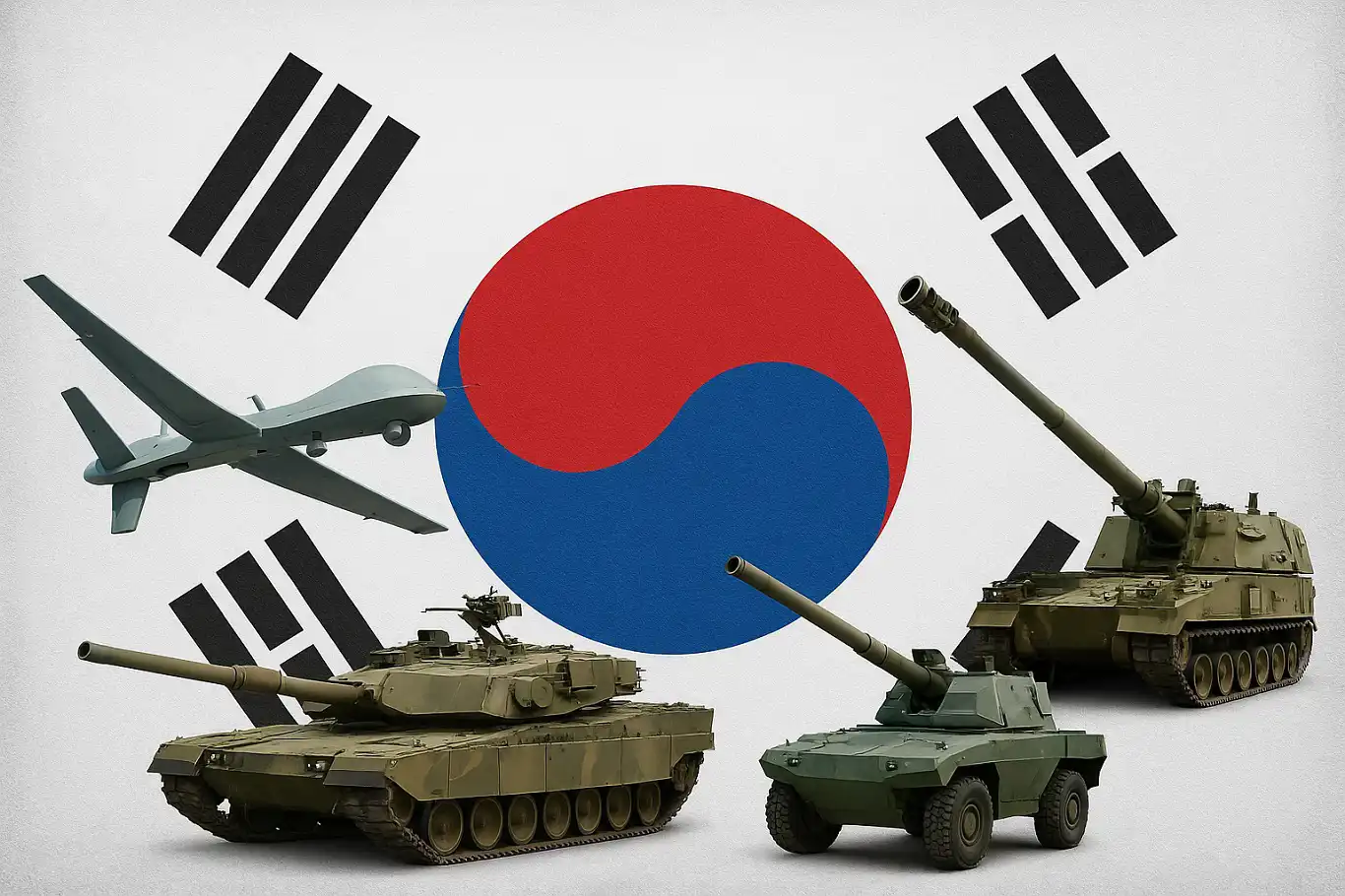South Korea unveils ambitious plan to become top four global defence power by 2030


South Korea has set an ambitious goal of joining the world’s top four defence powers by 2030, with President Lee Jae Myung announcing a significant funding boost for weapons development, aerospace research, and AI-driven combat technology during the opening of the Seoul International Aerospace & Defense Exhibition (ADEX) 2025 on Monday.
Speaking before an audience of defence leaders, engineers, and foreign delegates at what is being described as the nation’s largest-ever arms fair, President Lee said his administration would allocate a “larger-than-expected budget” to strengthen the country’s defence innovation capacity and ensure technological self-reliance.
“Becoming one of the top four powerhouses in the defence industry is by no means an impossible dream,” President Lee declared, unveiling a long-term strategy centered on self-reliance and technological sovereignty.
He emphasized that Korea’s advancement would rely heavily on indigenous research and development, particularly in semiconductors, AI systems, autonomous platforms, and advanced materials — all crucial components for next-generation weapon systems.
“We will establish technological sovereignty by focusing investment on technologies, parts, and materials that must be secured independently,” Lee stated, reaffirming the government’s intention to reduce reliance on foreign suppliers and boost Korea’s domestic defence manufacturing capabilities.
According to data from the Stockholm International Peace Research Institute (SIPRI), South Korea currently ranks 10th globally in arms sales but has rapidly ascended in recent years as demand for weapons and munitions has surged following Russia’s invasion of Ukraine.
Korean defence firms such as Hanwha Aerospace, Hyundai Rotem, and Korea Aerospace Industries have secured record-breaking contracts for howitzers, armored vehicles, missiles, and warships with countries in Europe, the Middle East, and Asia.
Defence exports have grown into one of Seoul’s most profitable sectors, reflecting South Korea’s growing reputation as a reliable and high-tech arms supplier. From precision-guided missiles to state-of-the-art submarines, Seoul’s weapons systems are increasingly viewed as cost-effective alternatives to U.S. and European-made arms.
Analysts say South Korea’s defence surge represents a broader shift in global power dynamics. As traditional arms giants such as the United States, Russia, and China face supply chain challenges, Seoul’s advanced industrial base and high-tech ecosystem give it a strategic edge.
“South Korea is leveraging its strengths in semiconductors, robotics, and shipbuilding to expand its global military footprint,” said defence analyst Kim Hyun-woo of the Korea Institute for Defense Analyses. “This marks a transformation from a regional player to a major global force in arms production.”
The new initiative aligns with South Korea’s growing strategic ambitions amid regional security challenges and shifting alliances in the Indo-Pacific. If successful, Seoul could join the ranks of global defence leaders — alongside the U.S., China, and Russia — by the end of the decade. (ILKHA)
LEGAL WARNING: All rights of the published news, photos and videos are reserved by İlke Haber Ajansı Basın Yayın San. Trade A.Ş. Under no circumstances can all or part of the news, photos and videos be used without a written contract or subscription.
A moderate earthquake struck off the southeastern coast of the Philippines on Monday, the United States Geological Survey (USGS) reported.
The Israeli occupation army has begun marking a new set of boundaries known as the “yellow line” inside the Gaza Strip.
The Al-Quds Brigades, the armed wing of the Islamic Jihad Movement, announced that one of its senior field commanders, Mahmoud Talal Abdullah (49), was martyred inside an Israeli prison after months of medical neglect and torture.